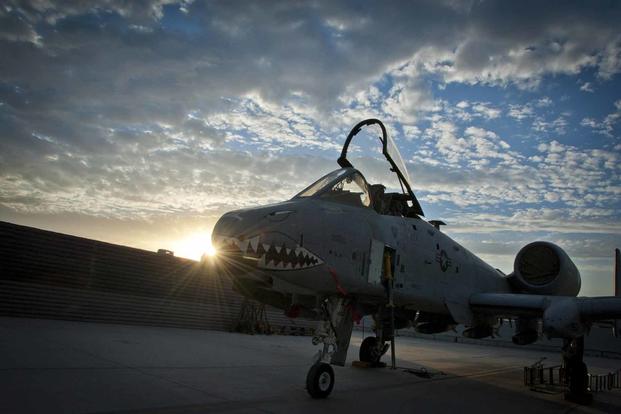Air Force Secretary Frank Kendall said Wednesday that some of America's aging A-10 Thunderbolt combat jets could potentially be given to Ukraine as part of continued efforts to help that country repel Russian forces.
Kendall made the comment at the Aspen Security Forum in Colorado on Wednesday evening after he was asked by a moderator whether the A-10, also known as the Warthog and which the Air Force has been slowly retiring from its fleet while encountering congressional resistance, could be given to Ukraine.
"That's largely up to Ukraine," Kendall said. "Older U.S. systems are a possibility. ... We will be open to discussions with them about what their requirements are and how we might be able to satisfy them."
Read Next: US Air Force Chief of Staff Says Officials Considering Training Ukrainian Pilots
Kendall's comment about the A-10 is a notable turnaround from what he said back in March at the Air Force Association's Air Warfare Symposium, where he threw cold water on the idea of sending A-10s to Ukraine.
"I'm not aware of any current plan or even a discussion of a current plan to field or provide A-10s to the Ukrainians," Kendall said at the time.
Kendall's comments at the Aspen Security Forum come as House lawmakers recently approved $100 million as part of the 2023 National Defense Authorization Act to train Ukrainian pilots to fly U.S. fighter jets as the campaign against Russia rolls into a fifth month.
The A-10, a big airframe with a 57 foot, 6-inch wingspan, has been in service with the U.S. military since the 1970s and has become beloved by troops for its ability to endure extensive damage while delivering ample munitions and still making it home. It was used extensively in Iraq and Afghanistan, providing close-air support for troops as it lumbered above at a max speed of 420 miles per hour, glacial by modern jet standards.
In the first couple of weeks into Russia's invasion of Ukraine, some lawmakers and defense experts suggested giving the aging Warthogs -- known for their signature "brrrttt" noise emitted from 30mm Gatling-style guns -- to the country as it took on convoys of Russian troops crossing the border.
While the idea was largely ignored then, at least partially because training pilots takes months if not years, renewed interest has grown among U.S. military leaders about prepping Ukrainian pilots to fly either American or allied aircraft.
Prior to Kendall's comments Wednesday, Air Force Chief of Staff Gen. Charles Q. Brown Jr. told attendees at the Aspen Security Forum that there is discussion of training Ukrainian pilots on systems such as the Eurofighter Typhoon, the French Dassault Rafale jet and American aircraft.
"There's a number of different platforms that could go to Ukraine," Brown said. "Probably not MiGs. I think it'll be tougher to get parts in the future from the Russians, so it'll be something non-Russian -- I could probably tell you that."
Ukraine has not been shy about asking for U.S. fighter jets in its war against Russia. In March, the country's air force tweeted about wanting F-15 Eagle and F-16 Fighting Falcon fighter jets and claimed its pilots "can learn to fly these with just 2-3 weeks of training."
Defense experts say it would take significantly longer than that, one reason there was an initial push to send Russian jets Ukrainian pilots were already familiar with early in the war. Those plans fell apart over how the aircraft could be delivered without making NATO airfields potential targets.
-- Thomas Novelly can be reached at thomas.novelly@military.com. Follow him on Twitter @TomNovelly.
Related: Ukraine Aims High with Request for F-15 and F-16 Jets. Here's Why It Probably Won't Happen












